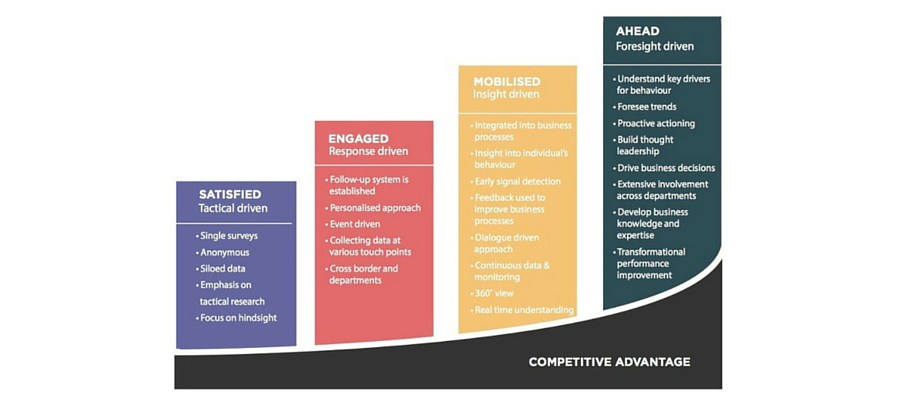Employee engagement is a workplace approach resulting in the right conditions for all members of an organisation to give of their best each day, committed to their organisation’s goals and values, motivated to contribute to organisational success, with an enhanced sense of their own well-being.
According to David Macleod: “This is about how we create the conditions in which employees offer more of their capability and potential”.
Employee engagement is based on trust, integrity, two way commitment and communication between an organisation and its members. It is an approach that increases the chances of business success, contributing to organisational and individual performance, productivity and well-being. It can be measured. It varies from poor to great. It can be nurtured and dramatically increased; it can be lost and thrown away.
Why employee engagement is important
Research shows that organisations with high levels of employee engagement are more efficient and effective, and that highly engaged employees:
- are more customer focused, find they are more creative at work, and take less time off sick;
- care about the future of their organisation and put in greater effort to help it meet its objectives;
- feel proud of the organisation they work for and are inspired to do their best and motivated to deliver the organisation’s objectives.
What can be achieved with high engagement levels
Engaged Employees lead to…
- higher service, quality, and productivity, which leads to…
- higher customer satisfaction, which leads to…
- increased sales (repeat business and referrals), which leads to…
- higher levels of profit, which leads to
- higher shareholder returns (i.e., stock price)
How to approach it
While the benefits are obvious organisations looking to transform employee engagement can feel that the whole process is both daunting and complex, requiring deep cultural change and buy-in from staff and management at all levels. So how do you move from where you are now to fully engage with your workforce?
The key point is that rather than trying to jump directly to the end of the journey, it is better to follow a more measured, step by step approach. There are a number of stages that every organisation tends to follow, and the first point is to identify where you currently sit. By knowing your organisational context you then have a better idea of the strategy and tactics you need to move to the next level.

1 Tactical
Organisations are listening to their staff through a single, annual employee survey, often paper-based. This is a good start point, but the whole process is time-consuming and data tends to sit in a silo and is not integrated with other feedback from employees. The result is a backward-looking picture which can help make tactical improvements but doesn’t give businesses a view of what is currently happening. Employees can feel disengaged and that their voices go unheard. Many organisations are still at the tactical stage, but are looking to change.
2 Response driven
Stage two of the journey adds event-driven feedback from employees to the annual survey. This comes from specific parts of the employee journey, such as promotions, return from leave or training sessions. How feedback is collected and used is much more personalised and there are systems in place to ensure responses are followed up satisfactorily. The result is a more holistic approach that boosts engagement as employees feel much more that they are being listened to.
3 Insight driven
After the second stage, the employee voice is now embedded with business processes, and the feedback staff provide is helping to drive improvements. However, it is not yet a continuous, two way dialogue which will deliver real-time insight into what staff are thinking and allow the business to react quickly. At this point organisations need to add ‘always on’ feedback channels with staff able to provide their views however, and whenever, they want. By adding this vital source organisations can use this feedback to guide their strategy and take strategic, rather than just tactical, decisions.
4 Foresight driven
Insight driven organisations benefit from deeply engaged employees who are happy to give their views, knowing that they will be listened to and acted upon. The final stage sees companies moving beyond insight to use feedback to predict the future and act accordingly. Across the entire organisation, decisions are determined by a deep understanding of the drivers behind employee behaviour, enabling businesses to accurately spot trends and opportunities and take immediate action to benefit from them. This drives transformational, sustained performance improvement.
By the end of the journey, employees are not just engaged, but mobilised, proactively helping the organisation to meet its needs and committed and happy in their roles. Obviously to reach this point takes time as it requires a major cultural change and cannot be rushed. However, using the four stage model can provide a useful guide to the next steps you need on the journey to building a fully engaged, committed workforce, with all the benefits that this brings.
Next Article: Engagement Ideas that really make sense…especially in Greece


